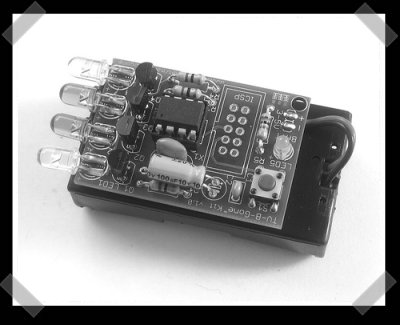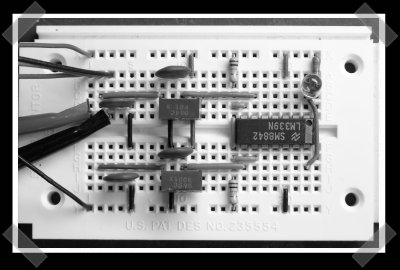
[Roo] sent this in, and it took me a few minutes to see what’s so interested about a deprecated digital audio player. The Rio Receiver originally sold for about $350. Today it’s a dead product, but thanks to some software mods, it can be hacked to acquire the abilities of the SLIMP3(A.K.A. Squeezebox) player. So score one of these puppies on ebay and thanks to a combination of a modified kernel for the player and some software on a linux box, you you turn that old Rio Receiver into a SLIMP3 emulator.
home entertainment hacks796 Articles
Automatic Projector Calibration

[Johny Lee] sent in his(pdf) awesome projector calibration project. By adding embedding some optical fiber that feed into a set of USB connected light sensors, his groups software can determine the exact pixel position of each sensor. Once the positions are determined, the projected image can be dynamically adjusted to fix the screen. The technique can be used to stitch together multiple projectors, and even calibrate an image to project onto a three dimensional model. I know some home theater nuts that would love to have this system for calibrating their CRT projectors.
This is such an excellent project, that I want to give credit where it’s due – it was developed by [Johnny C. Lee], [Paul H. Dietz], [Dan Maynes-Aminzade], [Ramesh Raskar] and [Scott E. Hudson].
Be sure to check out the video demo after the break!
Presenting Hackit – Got A Better Idea?

I came back from a quick road trip with a trunk full of hackable hardware. After grabbing a little caffeine this morning, I thought we’d try something different for those slow Sundays. I’m going to come up some interesting hacking kit, point out a few classic hacks for it, and challenge you guys to come up with something better. Every so often, we’ll be sending some of said hardware to the most worthy of commenters. Read on to check out our first ‘Hackit’ challenge.
High Power TVBGone

[Ladyada]’s been busy lately. [bladdo] wrote in to tell me that she put together an extra powerful kit version of the TVBgone. This one’s supposed to be good for over 100 feet. If you really, really want to get your ass kicked during the super bowl, this baby in a sports bar should do the trick. There’s an optional programming header, so you could program it to turn every TV onto the SciFi channel.
Remember, I want to hear about your hacks! Use the tips line to send ’em in.
Speaker Power Detection Circuit

This is an interesting way to monitor your speakers. [Keith] put together this speaker line monitor after a commenter requested it on his blog. It’s designed to check for power on the speaker line and drive a logic/led output. Apparently there’s some risk of shorting your amp, so he’s planning to redesign the input stage. Still, it’s neat little hack to keep an eye on things. Personally, I’d just put em on their own class A amp and automate the power switching, but there are plenty of situations where this could be useful.
Roasting Pan Audio Amplifier

When you need a rigid, vibration-free chassis for your amplifier, look no further than a roasting pan. I’ve used cast cement for subwoofers, but using a cooking pan bolted to a heavy wooden chopping board is a cheap way to get a rigid surface on which to build audio gear. The amp circuitry used by [Mark] is not complex, but it gets the job done. The “oxygen free copper cable” and “pure silver wire” are not needed, just make sure you have a solid mechanical connection. In other words, just tin your wires, bend small “u” shapes at each end, hook them together, and apply solder to the heated ends. Alternatively, hold the ends of stranded wires parallel to each other and twist the ends together before tinning, then solder. Test everything with a multimeter while moving wire joints to make sure you have no weak connections. Now you won’t waste your money on hyped-up cabling materials.
Thanks to [Gio] (who seems to have some personal audio projects as well) for the tip.
Go International With Your Zune

In a fit of apparent oddity, the Zune doesn’t support non-US characters. [Mike] sent in this how-to on modding the Zune software to speak other languages. We haven’t seen much on the Zunes, so it’s about time for something to come out.










